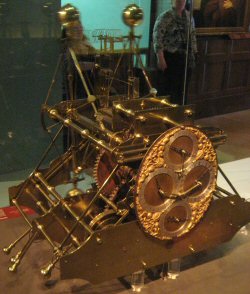Fájl:H1 low 250.jpg
H1_low_250.jpg (250 × 294 képpont, fájlméret: 81 KB, MIME-típus: image/jpeg)
Fájltörténet
Kattints egy időpontra, hogy a fájl akkori állapotát láthasd.
| Dátum/idő | Bélyegkép | Felbontás | Feltöltő | Megjegyzés | |
|---|---|---|---|---|---|
| aktuális | 2011. február 24., 20:55 |  | 250 × 294 (81 KB) | Phantom Photographer | {{Information |Description ={{en|1=Photograph of John Harrison's H1 clock. Low resolution for illustrative purposes only, and to discourage potential commercial use.}} |Source ={{own}} |Author =[[User:Phantom Photographer|Phantom Ph |
Fájlhasználat
Az alábbi lapok használják ezt a fájlt:
Globális fájlhasználat
A következő wikik használják ezt a fájlt:
- Használata itt: bn.wikipedia.org
- Használata itt: ca.wikipedia.org
- Használata itt: cs.wikipedia.org
- Használata itt: de.wikipedia.org
- Használata itt: en.wikipedia.org
- Használata itt: eo.wikipedia.org
- Használata itt: es.wikipedia.org
- Használata itt: eu.wikipedia.org
- Használata itt: fi.wikipedia.org
- Használata itt: fr.wikipedia.org
- Használata itt: gl.wikipedia.org
- Használata itt: he.wikipedia.org
- Használata itt: hr.wikipedia.org
- Használata itt: it.wikipedia.org
- Használata itt: ja.wikipedia.org
- Használata itt: no.wikipedia.org
- Használata itt: sv.wikipedia.org
- Használata itt: uk.wikipedia.org
- Használata itt: zh.wikipedia.org

